5 Best Schmidt Cassegrain Telescopes in 2025 – Reviews & Top Picks
Last Updated on
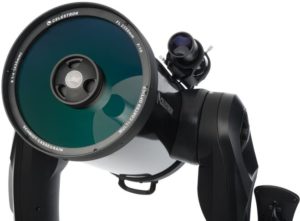
Schmidt Cassegrain telescopes are powerful, compact instruments with loads of utility. Good products will have you seeing stars, while subpar units will only frustrate. To separate the good from the bad, we’ve tested many dozens of different options.
In the process, we saw many duds, but also a few options that are worthy of your consideration. The top five instruments have been assembled in the Schmidt Cassegrain reviews that are found here. Whether you have a ton of cash spend or you are trying to stick to a restrictive budget, there will be something on this list for you.
Read on!

A Quick Comparison of Our Favorites in 2025
| Image | Product | Details | ||
|---|---|---|---|---|
| Best Overall |
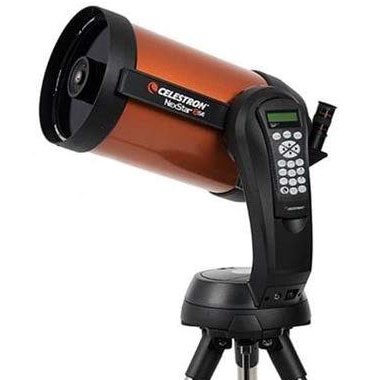 |
Celestron 8 SE Schmidt-Cassegrain Telescopes |
|
CHECK PRICE |
| Best Value |
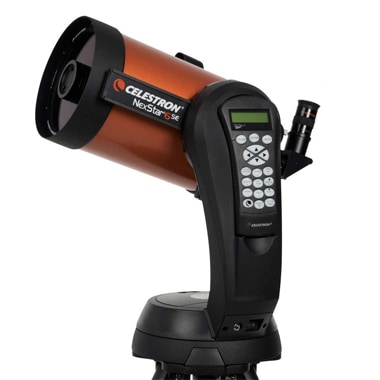 |
Celestron NexStar 6SE Telescope |
|
CHECK PRICE |
| Premium Choice |
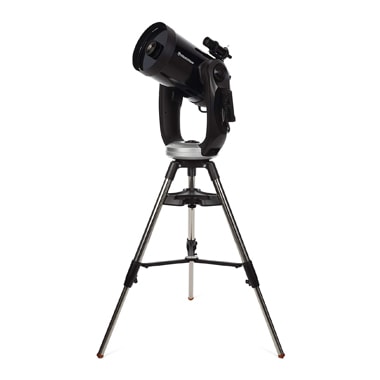 |
Celestron 1100 Schmidt-Cassegrain Telescope |
|
CHECK PRICE |
 |
Celestron 925 Schmidt-Cassegrain Telescope |
|
CHECK PRICE | |
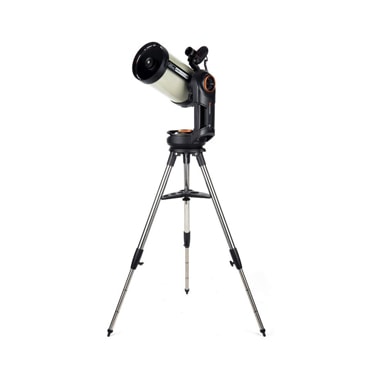 |
Celestron NexStar 8 Schmidt-Cassegrain Telescope |
|
CHECK PRICE |
The 5 Best Schmidt Cassegrain Telescopes
1. Celestron 8 SE Schmidt-Cassegrain Telescopes – Best Overall

The Celestron tops our chart of the best Schmidt Cassegrain Telescopes for the fact that it comes complete with all the fixings. The unit is digitally controlled which makes it easy to type in celestial components. Fully automated, the telescope comes loaded with a database of more than 40,000 celestial objects.
Similarly, it can be further adjusted via a remote that doesn’t require the fiddling of complex dials and nobs.
The Celestron comes with a 25-mm lens, but even more importantly, you get an impressive 8 inches of aperture. This feature ensures that you will able to utilize tons of light, further increasing your ability to see isolated celestial objects.
And of course, it comes with all of the other necessary goodies including a tripod and a carrying case. We have observed that it is a little bit heavier than we tend to prefer. Fully assembled, it weighs in at thirty pounds. Consequently, it will be very difficult to transport in one piece but it is otherwise a highly effective piece of equipment that most people will enjoy owning.
- Huge automated database
- 8 inches of aperture
- Fully digital controls
- Heavy
2. Celestron NexStar 6SE Telescope – Best Value

The Celestron NexStar earns the distinction of being our best Schmidt Cassegrain telescope for the money. Telescopes of any variety tend to be very expensive so if you are looking to get a good deal this may be a tempting opportunity.
For a fair price, you get many of the same features found in the top choice. Like the other Celestron, it is fully automated and features 40,000 celestial objects already installed. It also comes with a stand and a carrying case, making it good for transportation.
So. what is the difference? It’s the aperture level. Our top choice features 8 inches of aperture, while this unit comes with just 6 inches. For the layperson, it won’t make an enormous difference. However, it will certainly hinder your ability to gaze into deep space. Otherwise, though, it is virtually identical to our top pick, at a much lower price.
Unfortunately, this means it also features the same bulky weight. It’s 30 pounds when fully assembled, making it tough to move around with.
- Fully automated
- 40,000 object database
- Carrying case/stand
- Heavy
- Limited aperture
3. Celestron 1100 Schmidt-Cassegrain Telescope – Premium Choice

The Celestron CPC 1100 pulls out all of the stops. It features a whopping eleven inches of aperture making it excellent for deep-sky viewing. The 2800-mm lens further enhances the stunning field of vision. The stated magnification range is 90×50, and the lens has been treated with an XLT coating that further increases the image rendering.
And of course, like the other two telescopes we’ve seen to this point, it is fully digitized with a 40,000 object celestial database. Impressive specs aside though there are a few other things to appreciate. It comes with a stand and carrying case, and also benefits from an ergonomic design that makes it a little bit easier to handle.
Ergonomics aside though, this is a really big telescope. Assembled, it weighs in at 90 pounds, which will be difficult for anyone to handle. It’s also super pricey. It’s more expensive than our first two options combined, so budget accordingly.
- Massive aperture
- Specialty lens coating
- Ergonomic design
- Pricey
- 90-lb build
4. Celestron 925 Schmidt-Cassegrain Telescope

The Celestron CPC 925 features 9.25 inches of aperture, which will give you access to plenty of light. The focal length comes in at 93 inches, and it has a magnification rating of 59X. All features that make it well suited for the needs of the serious user.
And, like all of the telescopes featured up until his point, it comes pre-programmed with a database filled with 40,000 celestial objects. Consequently, though, it also features the same fatal flaw. The bodyweight is slightly less than 85 pounds, but when you get into that range, what difference do a few pounds make?
The other issue is the value of the purchase. It’s a great telescope, but for almost the same money, you can improve your specs substantially by going with the Celestron CPC 1100. Nevertheless, the CPC 925 is a really good telescope that will get the job done for the buyer with some money to spend.
- Huge aperture rating
- Large magnification level
- Huge database
- Small value concern
- Heavy
5. Celestron NexStar 8 Schmidt-Cassegrain Telescope

The Celestron NexStar is Wi-Fi enabled, which means it can effortlessly sync up with your phone. It comes with a remote control, which you can use to manipulate the telescope at your discretion. However, you can also control it directly from your phone if that is more to your liking.
The design concept is specially optimized for viewing parties. It features motorized bearings that maneuver smoothly across brass gears. Finally, it also benefits from a substantial 10-hour battery life. You can even plug your phone into the battery to ensure it doesn’t die mid-use.
However, the actual viewing quality is a little bit limited relative to the other options on our list. The aperture rating is a little bit modest by comparison. At 8 inches, it is less substantial than most of the other options featured here. However, it still manages to be pricier than many of the units seen here. If you are buying strictly for viewing quality this won’t be the one you go for. Still, there is no questioning the fact that this is a high quality, fairly easy to use telescope.
- Wifi-enabled
- Easy to use
- Smooth tracking
- Viewing quality is a little so-so
- Value concerns

Buyer’s Guide – Choosing the Best Schmidt Cassegrain Telescope
Telescopes can be fairly complicated instruments. Here are some considerations that should help you to better understand the products you’ve just read about.
What is a Schmidt Cassegrain?
Sounds like some sort of specialty brand, doesn’t it? Not quite. The name does not refer to a company but rather a style of telescope that relies on a few unique but certainly highly effective features.
The Schmidt Cassegrain telescope combines a specialty Schmidt corrector plate with a Cassegrain reflector. Kind of getting into the weeds, huh?
Unless you have an advanced degree in astrophysics, you probably aren’t going to understand the intricate engineering that goes into the unique parts of a telescope. Perhaps this will be easier to understand: Schmidt Cassegrain telescopes are known for being very powerful, and relatively compact. A winning combination if ever there was one.
Aperture
There is a lot of calculus that goes into having a true understanding of aperture. To put the matter as simply as possible, aperture refers to a telescope’s ability to take in and use light. Larger aperture levels provide you with an enhanced ability to see “deep-sky objects” (systems, planets, and objects that are severely isolated from light).
More specifically, it refers to the diameter of the telescope’s primary optical component. This might be a lens or a mirror. In any case, a higher aperture rating will yield greater utility.
In addition to peeking into deep space, heightened aperture ratings make it marginally more possible to peak into space in very bright locations. For example, cities are notoriously unfriendly to telescopic viewing. But a high aperture level (working in accordance with several other specialized adjustments) will make it easier to use in a vibrant city.
Of course, no matter what, you will be best served in an isolated location residing a good deal away from city lights.
Size
Massive telescopes have their purpose. In academic settings, oversized units mounted in large observatories are exactly what you will require. However, most hobbyists will want something that can comfortably fit in the trunk of their car.
For a variety of reasons, you will probably want to transport your telescope. That being the case, you will want to look into a product that is easy to move around with.
Magnification Level
Much is made about the magnification level of a telescope. Little known secret? Most telescopes can magnify to virtually unlimited levels. The telescope itself doesn’t really have magnification limitations. With the right lens, it can magnify indefinitely.
However, there are other factors that have a much bigger impact on the viewing capacity of any given unit. The first, as we already discussed, is aperture. If your telescope can make good use of light, it will be able to peak much farther than one that can’t.
The other factor is one that no one can control: environmental conditions. Pretty self-explanatory. Clouds, weather, or pretty much anything else can change what you see in your telescope.
Digital Controls
Telescopes tend to feature a pretty massive learning curve. While they are often used by hobbyists, they are primarily made for the purposes of research. More specifically, research by people with high levels of astronomical education.
You can definitely still enjoy yourself with only a layperson’s understanding of the instrument but any feature that makes the telescope easier to use will also be your friend.
Digital controls are among the best of these user-friendly features. Some telescopes will allow you to type in astronomical coordinates. The telescope will then self-calibrate for those coordinates.

Beginner Materials
Some telescopes will also come with beginner instructional materials that help orient you to the world of the tool. These materials may serve as a reliable step by step guide on how to start using your telescope.
This is an increasingly common inclusion, so look out for it you want an entry-level course on how to use your telescope.
Price
If you started with the reviews, you probably already know that all of the products on this list trend on the pricier side. That’s sort of the situation you are dealing with when you start looking into high-end telescopes.
For a high-quality viewing experience, you will usually need to pay near one thousand dollars. Higher quality units can cost several times that much. Budget accordingly as you hunt for your ideal product.
Wi-Fi
These days, toasters are Wi-Fi capable, so you shouldn’t be terribly surprised to see that telescopes are as well. A Wi-Fi telescope will sync up with your phone. This may make it easier to view and track celestial bodies.
It certainly isn’t a necessary feature, but it can make the process a little bit more user-friendly, and many people get a kick out of it. Some will even feature onboard charging stations so that you can run your phone indefinitely.

Conclusion
You’ve read our Schmidt Cassegrain reviews. Has one of them spoken to you yet? Maybe you want something that is effective, regardless of how much you wind up paying to get it. If you’re the type of person that doesn’t mind paying more money to get something high quality, you’ll probably find a good deal to like in our top choice, the Celestron 8 SE Schmidt-Cassegrain Computerized Telescope.
Or, perhaps you need to get your hands on a good telescope at a really great price. If so, you’ll lean towards the Celestron NexStar 6SE Telescope.
About the Author Robert Sparks
Robert’s obsession with all things optical started early in life, when his optician father would bring home prototypes for Robert to play with. Nowadays, Robert is dedicated to helping others find the right optics for their needs. His hobbies include astronomy, astrophysics, and model building. Originally from Newark, NJ, he resides in Santa Fe, New Mexico, where the nighttime skies are filled with glittering stars.
Related Articles:
How to Clean a Refractor Telescope: Step-by-Step Guide
How to Clean a Telescope Eyepiece: Step-by-Step Guide
How to Clean a Rifle Scope: 8 Expert Tips
Monocular vs Telescope: Differences Explained (With Pictures)
What Is a Monocular Used For? 8 Common Functions
How to Clean a Telescope Mirror: 8 Expert Tips
Brightfield vs Phase Contrast Microscopy: The Differences Explained
SkyCamHD Drone Review: Pros, Cons, FAQ, & Verdict



